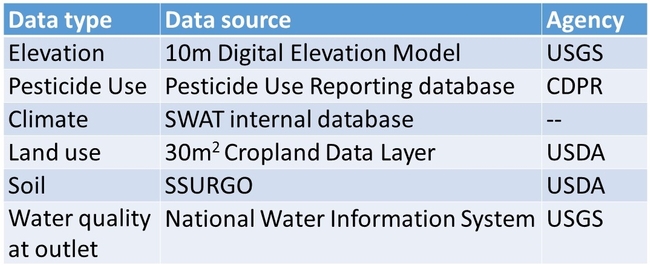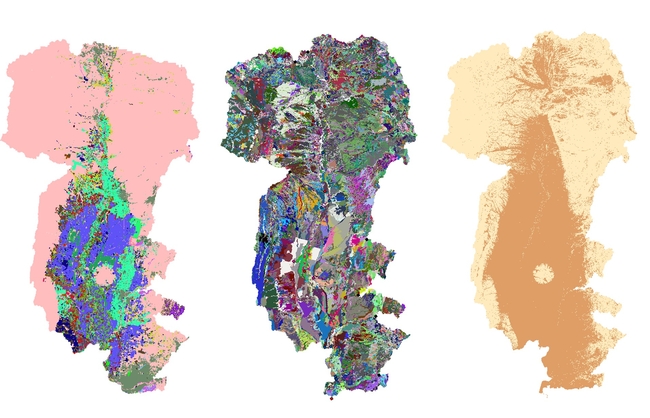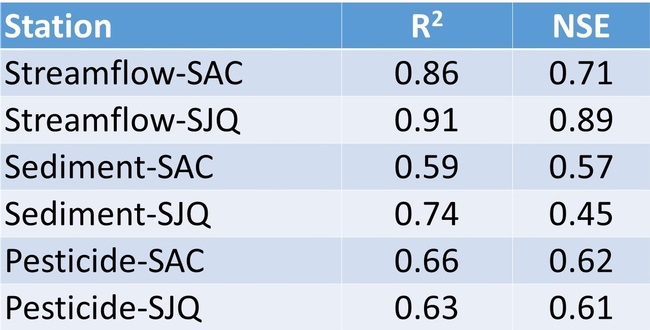Objectives
To provide quantitative information on pesticide loadings from the Sacramento and the San Joaquin watersheds into the Sacramento-San Joaquin Delta waterways using the Soil and Water Assessment Tool (SWAT).
- Set up the SWAT model for the Sacramento and the San Joaquin watersheds
- Calibrate and validate the model for streamflow, sediment and pesticide simulation
- Quantify pesticide loadings into the Delta using the calibrated SWAT
- Explore the possibility of simulating nitrogen load to the watersheds.
Background

SWAT is a public-domain hydrologic modelling tool developed by USDA-ARS. Hydrologic models are increasingly used for environmental exposure and risk assessment. They are much more cost-effective than field measurements and can be used to quantitatively predict pollutant fate and transport under a variety of conditions. SWAT uses high-resolution data available from public agencies – information such as weather and climate, surface runoff, return flow percolation, evapotranspiration, transmission losses, pond and reservoir storage, crop growth and irrigation, groundwater flow, reachrouting, nutrient and pesticide loading, and water transfer.
Approaches
- Analyze pesticide use in the watersheds.
- Simulate the pesticide loadings from these two watersheds.
For our pesticide source data, we used the Pesticide Use Report (PUR) database from California Department of Pesticide Regulation (CDPR). This database has rich resolution for uses and use trends, both spatial and temporal. The data is available for full use reporting since 1990. SWAT also requires spatially distributed input data. Those data were obtained from public databases maintained by various government agencies (Table 1).

The total area of the Sacramento and San Joaquin watersheds, as defined in this project, is about 23 300 and 15 000 km2, respectively. The watersheds were divided into subbasins and further partitioned into Hydrologic Response Units (HRU) based on unique combinations of land use, soil, and slope (Figure 2). Figure 2 shows an example for the Sacramento watershed.

Results
Results show that the calibrated SWAT can successfully simulate streamflow, sediment, and presence of the pesticide diuron in both the Sacramento and the San Joaquin watersheds (Table 2).
This work is conducted in collaboration with the Delta Region Areawide Aquatic Weed Project (DRAAWP). This portion of the project is led by Dr. Minghua Zhang, Dept of Land, Air and Water Resources, University of California (UC), Davis. Collaborating with scientists from NASA, Mr. Mohammad Abdolahi and Ms Huajin Chen have been working on the project at the AGIS laboratory at UC Davis. Contact us for any potential questions.
